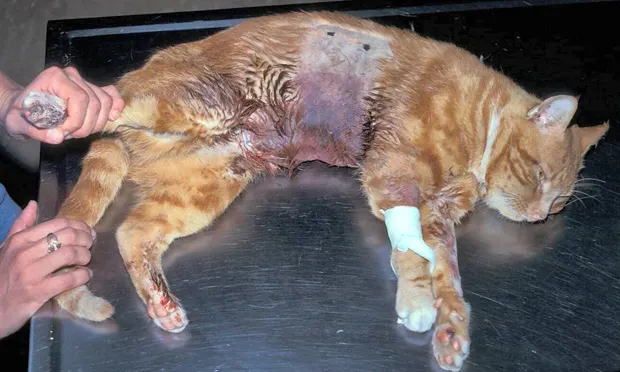Eastern Diamondback Rattlesnake Bite

The Eastern diamondback rattlesnake, indigenous to the Southeastern U.S., belongs to the pit viper group and plays an important role in rodent control. Its potent venom has vasotoxic, hematoxic, cardiotoxic, neurotoxic, and necrogenic properties. A rattlesnake will attack to defend itself, which can result in life-threatening wounds. When on the losing end of such encounters, cats are commonly envenomated on the lateral body wall. Dogs tend to present a head-first posture. Life-threatening consequences include hypovolemia and fibrinogenolysis. Standard treatment of

rattlesnake bite includes mixed crotalid polyvalent antivenin or the more purified product, CroFab (Crotalidae Polyvalent Immune Fab [Ovine]; Protherics, Inc), intravenous crystalloid fluids, analgesia, and other life-support measures as needed. Prognosis is guarded during the first 24 to 48 hours, with signs of improvement usually occurring by the end of the third hospital day.